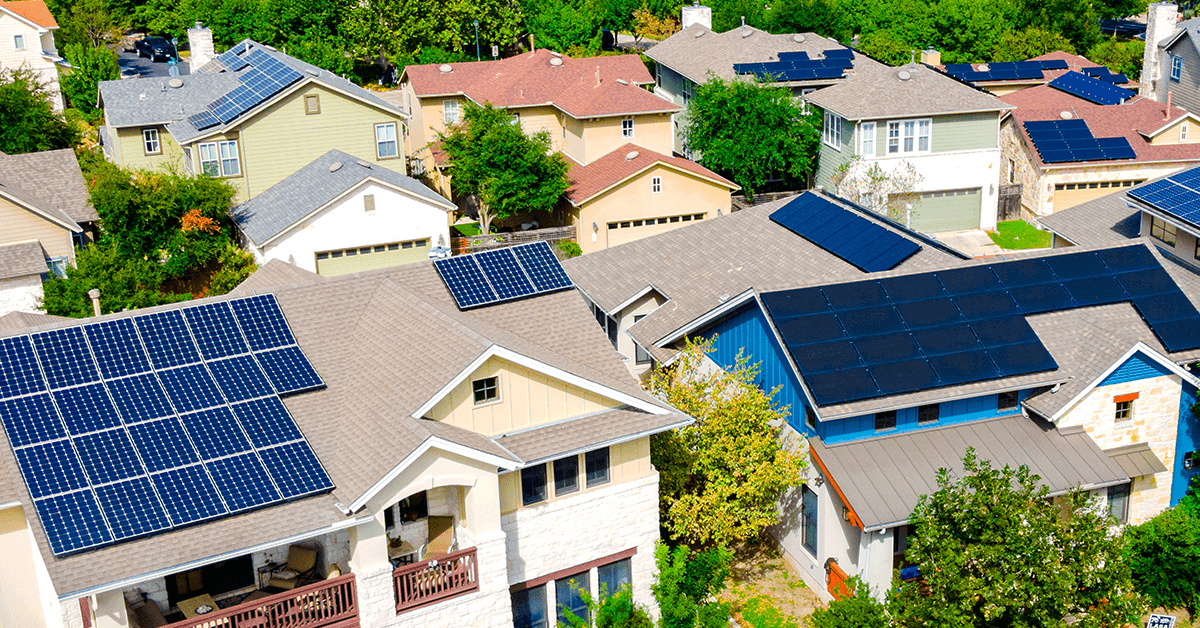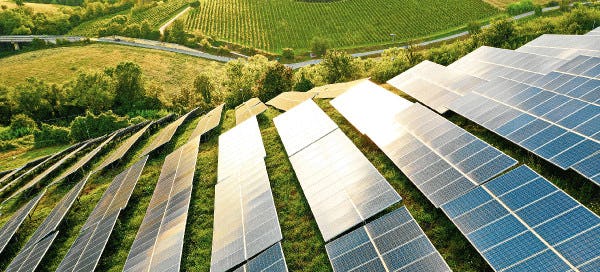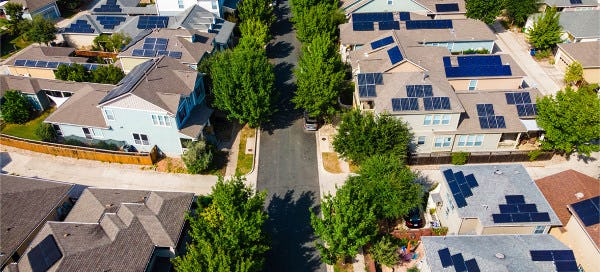Solar power has become more affordable in recent years and is now cheaper than coal or other fossil fuels in many regions. In fact, solar electricity is currently the cheapest form of renewable energy on the planet. More people are taking advantage of generous tax credits designed to promote the technology, fueling solar installation worldwide.
Going solar is a big decision that homes and business owners face. It's a significant investment, but the economic return can be huge. The switch to solar electricity can save you thousands of dollars over the solar panel system's lifespan. When you're considering the facts before going solar, it's essential to understand solar economics so you can make an informed decision.
Why Solar Electricity is Important
Currently, gas, oil, and other fossil fuels are the primary energy sources throughout the world. They are easy to find and inexpensive, but they are non-renewable energy sources. It's predicted that their supply, especially oil, will be significantly decline by the 2050s. For this reason, turning to renewable energy sources, like solar power, is crucial.
Price of Solar Panel Installation
The first question most people ask is about the cost of purchasing solar power equipment and how long before the system has paid for itself. While there are average local and national costs, every homeowner will have a unique situation, making their costs specific to their circumstances. The following factors determine the initial installation costs:
Size of the required solar panels
Geographical location
Manufacturer and quality of the panel
Type of installation (roof mount of ground mount)
Roof type
The environment surrounding your solar panels
After these factors have been considered and an initial cost has been determined, consumers want to know how long it takes before the system pays for itself? The solar panel payback period is also determined by several key factors.
Defining the Solar Panel Payback Period
The solar panel payback period is the period it takes for you to pay off your solar power system through savings on your electricity bill. This is calculated using the total installation cost and subtracting any financial incentives and electricity savings until the total has been paid.
For example, a consumer spends $16,000 converting to solar electricity, then gets a tax break of $4,000. Their total cost after incentives is $12,000. If the solar panels reduce electricity consumption by $1,500 each year, their payback period would be approximately eight years, assuming there are no price hikes.
In the United States, most homeowners can expect a solar panel buyback period of between nine and twelve years. You can estimate solar panel costs in your area, incentives, and payback length for your home using the solar panel estimator from Solar Reviews.
Factors Impacting Your Solar Payback Period
Five main factors impact your solar payback period.
Average Amount of Electricity Consumed
Every home will have a different size solar panel system. This will be determined by the average amount of electricity your home consumes. Your solar system must be big enough to support that use throughout the year.
Total Cost of The System
The total cost of your solar panel system is the final price of solar installation before applying any incentives.
Applicable Solar Incentives and Rebates
One incentive that attracts consumers to installing solar panels is the tax break at the end of the first year. If the installation is complete and you're fully operational before January 1, 2023, you can claim a federal tax credit of up to 26% of the total installation costs.
Many states offer additional solar enticements, like rebates or performance-based incentives, that can be combined with federal measures.
Amount of Energy Produced by Your Solar System
Once the size of your system has been determined, multiply the number of kilowatts (kW) your solar panels produce by the number of kilowatt-hours (kWh) that a single kW can produce in an entire year. Then multiply that answer by the amount you pay per kWh from your utility company.
Cost of Electricity
You can determine a solar payback time frame by dividing the system's total cost by the average annual savings in your area. This will tell you the number of years needed for you to complete your solar payback period.
Keep in mind that electricity rates can change over time, affecting how long it takes to pay off your system.
What is a Good Payback Period for Solar Power?
You can determine whether you're getting a positive return on your solar power investment. Do this by looking at the estimated lifespan of your system, which should be around 25 to 30 years. Assuming your payback period is eight years, your system will be paid for in 17 to 23 years. The best solar panel payback period is about half the life of your system.
Economics of Solar Financing
Even though the cost of renewable energy, like solar power, has decreased, it's still a significant investment. However, there are so many benefits to converting to solar electricity that many organizations offer incentives to consumers to make the cost more affordable. You will find these incentives in the form of rebates, tax credits, and performance-based incentives that can drastically reduce the price of your solar installation.
Tax Credits
One of the most common solar incentives is the federal solar tax credit. It returns some of your initial investment to help ease the financial burden of installing renewable energy. Currently, homeowners in the United States are eligible for a 26% credit, but this number will be reduced to 22% in 2023. When we say now is the time to go solar, we mean it.
Solar Renewable Energy Certificate (SREC)
Solar renewable energy certificates, or SRECs, are an additional solar incentive that you can earn by producing renewable energy with your solar panels. You can earn certificates or credits for every 1,000 kilowatt-hours of energy that your solar panels provides. The cost of SRECs will vary by location, but sometimes they can be worth hundreds of dollars.
Homeowners with rooftop solar systems can earn significant amounts of money selling their excess solar energy. However, this incentive is not available in every state.
Performance-Based Incentives (PBI)
As the name suggests, performance-based incentives (PBI's) give you money or credits for the amount of electricity generated by your solar system. Credits are determined per kilowatt-hour, but your system needs to be connected to a meter that measures the energy output. Monthly payments are received according to how your contract is designed.
Solar Rebates
Many utility companies, municipalities, or state organizations may offer solar rebates in addition to federal incentives. These are given upfront and can help decrease the initial cost of your solar system. How much you receive depends on the agreement and is often determined by the size of the solar system installed.
The Economic Impact of Solar Electricity
It's well known that solar power has positive effects on the environment. But it also has many economic benefits for the entire community.
Helps in Emergencies
Every day, people worldwide are affected by hurricanes, floods, fires, and other natural disasters. Depending on the severity of the damage, homes can be left without power for days at a time. However, the sun will continue to produce electricity, meaning you can help your community by providing power to those without. It may even save a life.
Creates Jobs
The solar industry is booming. With the increase in solar installation projects, there is a need for more jobs. These jobs cannot be outsourced to another country, leading to more growth within the United States. These jobs provide opportunities for local families, which trickle down and support the entire economy of the community.
Financing Solar Electricity
The use of solar incentives makes financing a solar project much more manageable. But you still have to invest a substantial sum for installation costs. Because of the increase in demand, along with the falling prices, many financial institutions offer their own packages for consumers interested in transitioning to solar power.
Upfront Cash
Perhaps the best way to pay for your solar panel installation is by paying for it with cash. You automatically own your system and begin reaping the benefits right away. But there are more advantages than that. Other reasons why cash is the best option include:
Getting applicable tax incentives
Increasing your property value
Taking control of your electricity bill
Smaller energy bills to compensate for what your solar panels don't produce
You gain all of these benefits when you finance your project with cash.
Solar Loans
Using a loan to pay for your solar system is like using a loan to pay for your car. You make monthly payments until you reach a $0 balance, and then you officially own the solar system.
There are several types of loans, including personal and home equity loans. They often have fixed interest rates and repayment terms from two to seven years. Shorter repayment terms allow you to clear the debt sooner and gain the financial benefit of owning solar panels.
Solar Lease
A third option to finance your solar project is to lease the panels. This means that a third party will own, monitor, and maintain the system. Unfortunately, you are not available for any of the tax incentives with this option. However, it gives you a chance to reduce your monthly electricity bill.
Deciding if Solar Electricity is an Economical Choice For You
There are many factors to consider before taking the plunge into the world of solar power. For many homeowners, the most significant factor may be the economics of the decision. If you're still on the fence, you can start weighing these aspects to determine whether it is a good fit for your family.
How Long You'll Be In the Area
If you know that you're planning to relocate within the next 10 years, solar panels might not be the best investment. You won't be in your home long enough to begin seeing the financial benefits. Yes, the home improvement may add value to your property, but it may not be enough to recoup the installation cost.
Current Financial Status
What does your current debt to income ratio look like? How much money do you have in savings? If you have enough to pay cash for the panels, you'll get some money back in tax credits and other solar incentives. But if you need to add to your debt with another loan, you'll have to consider the loan's interest rates and other terms.
Current Location
The sun shines everywhere, so solar panels can be installed in the north and south. However, it may take longer to fully recover the cost of your investment in areas where there is little sunlight.
After considering all of the pros and cons, the final decision is up to your discretion. If you're planning to stay in the same home for a while, solar power can earn you thousands of extra dollars a year. It must be considered carefully, but if your budget can handle the investment, you'll be making great strides to save energy, money, and the planet.
Should You Wait to Switch to Solar Energy?
Although the cost of solar power may continue to decrease, do you want to sit around and wait for that to happen? It could be years before the price reaches the bottom, and by then some of the incentives may be gone.
Federal Solar Tax Credit
Federal tax credits are a big part of why so many families have chosen to go solar since 2006. When they were first introduced, taxpayers could get back 30% of their installation costs through tax credits. It helped boost the solar economy by encouraging many to take the plunge into solar energy. This provided the industry with the necessary resources to lower installation costs.
The price decline proved that the tax credits worked, and now the government has taken steps to eliminate this incentive. The total percentage dropped from 30% to 26% in 2020 and will drop to 22% in 2023. That is the final year for residential customers to take advantage of the federal tax credit since it is set to disappear in 2024. Commercial properties will still have access to a 10% credit at that time.
You'll Lose Years Worth of Savings
Aside from the current tax incentives, one of the biggest benefits of solar power is how much money it can save you.
The economic benefits of solar energy are pretty straightforward. Invest in solar, save money, and boost the workforce. But it's up to you to decide whether solar panels would be a valuable asset to your home.
Have You Heard About Rhythm?
If you live in Texas, you know that you can choose your energy provider. At Rhythm, we provide options for renewable energy. When you have solar panels, you can earn money just by letting them do their thing! We pay you for your unused solar power with our solar buyback plan. Call us today to learn more about this valuable savings plan and learn how we can help you save!




